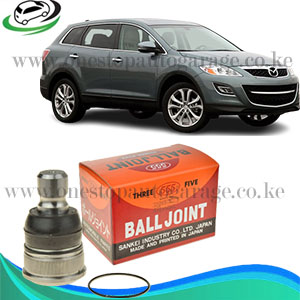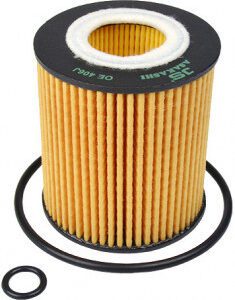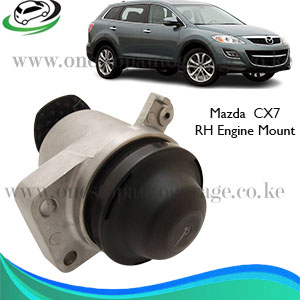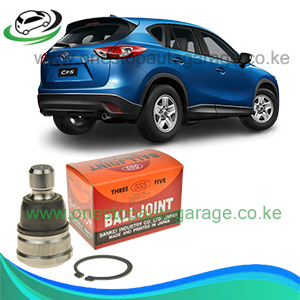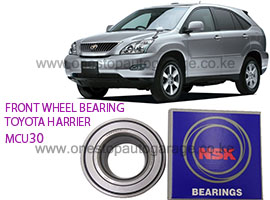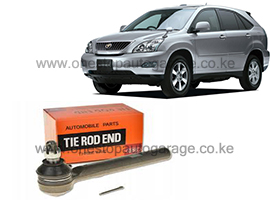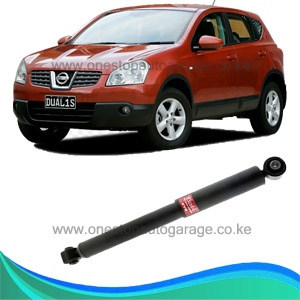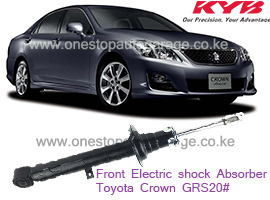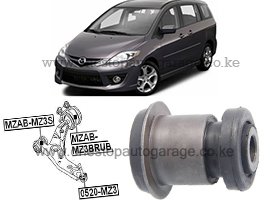No products in the cart.
KSh2,500KSh3,000 (-17%)
In stock
MAZDA CX-7
BALL JOINT
BRAND:555
MADE IN JAPAN
PRICE PER PIECE
Categories: Suspension Parts, Ball Joints
Frequently Bought Together
-
Add to Package (KSh2,500
KSh3,000(-17%)) -
Add to Package (KSh4,000
KSh4,500) -
Add to Package (KSh9,000
KSh10,000) -
Add to Package (KSh5,000
KSh5,500) -
Total Price: KSh20,500
- This item: MAZDA CX-7 BALL JOINT(KSh2,500
KSh3,000(-17%)) - MAZDA CX-7 FRONT WHEEL BEARING(KSh4,000
KSh4,500) - MAZDA CX-7 RH FRONT ENGINE MOUNT(MZM-CX7RH)(KSh9,000
KSh10,000) - MAZDA CX-7 TIE ROD END(KSh5,000
KSh5,500)
MAZDA CX-7 BALL JOINT (555) in Kenya
Find the best prices for Mazda CX-7 Ball Joint in Nairobi Kenya.
The price for Mazda CX-7 Ball Joint is Ksh2500 in Nairobi Kenya.
Ball joints are critical components of a vehicle’s suspension system, connecting the control arms to the steering knuckles. They enable the movement and flexibility needed for steering and suspension while supporting the weight of the vehicle. Over time, ball joints can wear out due to the constant stress and movement. Recognizing the signs of worn-out ball joints is crucial for maintaining vehicle safety and preventing further damage to the suspension system. In this comprehensive guide, we explore the indicators, symptoms, and methods to identify worn-out ball joints.
**1. Unusual Tire Wear: One of the early signs of worn ball joints is irregular tire wear. When ball joints are deteriorating, they can cause misalignment issues, leading to uneven tire wear. Inspect the tires regularly for signs such as excessive wear on the inner or outer edges, cupping, or scalloping.
**2. Clunking or Knocking Noises: A common and unmistakable symptom of worn-out ball joints is the presence of clunking or knocking noises, especially when driving over bumps or rough terrain. These noises result from the play or movement in the worn ball joints, allowing the suspension components to impact each other.
**3. Steering Wander or Poor Handling: Worn ball joints can affect the vehicle’s steering and handling characteristics. If you notice increased steering wander, where the vehicle seems to drift or veer off course without input, it could indicate compromised ball joints. Poor handling, including a feeling of looseness or instability, may also be a consequence of worn-out ball joints.
**4. Vibration in the Steering Wheel: Vibrations felt in the steering wheel, particularly during acceleration or at higher speeds, may be indicative of worn ball joints. The vibrations can result from the compromised stability and alignment caused by deteriorating ball joints.
**5. Excessive Steering Play: Excessive play in the steering wheel, where you can turn the steering wheel without corresponding movement in the vehicle’s direction, can be a sign of worn-out ball joints. This play may contribute to imprecise steering and a lack of responsiveness.
**6. Visible Wear or Movement: Inspect the ball joints visually for signs of wear or movement. Ball joints are typically fitted with rubber boots that protect them from dirt and debris. If these boots are damaged or torn, it exposes the ball joint to contaminants, accelerating wear. Additionally, visible movement or play in the ball joint when the suspension is compressed or extended is a clear indication of a problem.
**7. Grease Leakage: Ball joints are lubricated with grease to reduce friction and wear. If you observe grease leaking from the ball joint or around the rubber boot, it suggests a compromised seal and potential wear. The loss of grease can accelerate the deterioration of the ball joint.
**8. Alignment Issues: Worn ball joints can lead to misalignment problems, affecting the vehicle’s overall alignment. If you notice that the steering wheel is off-center when driving straight, or if the vehicle pulls to one side, it could be a result of worn ball joints impacting the alignment.
**9. Diagnostic Techniques: Performing a visual inspection of the ball joints is a good starting point. Check for signs of wear, damage to the rubber boots, and any visible play in the joints. Additionally, you can employ the following diagnostic techniques:
- Jack Test: Safely lift the vehicle off the ground using a jack and support it with jack stands. Grasp the tire at the 12 o’clock and 6 o’clock positions and attempt to rock it back and forth. Excessive play or movement may indicate worn ball joints.
- Visual Inspection: Inspect the ball joints for visible signs of wear, damage, or grease leakage. Pay attention to the rubber boots, looking for tears or punctures.
- Listen for Noises: While driving, listen for clunking or knocking noises, especially when going over bumps or making turns. These audible cues can be indicative of worn-out ball joints.
- Check for Grease Fittings: Some ball joints come with grease fittings that allow for lubrication. If your vehicle has these fittings, ensure that they are not dry or clogged, and lubricate the joints according to the manufacturer’s recommendations.
- Professional Inspection: If you are uncertain or unable to perform these checks, it’s advisable to seek the expertise of a qualified mechanic. Professional inspection can provide a thorough assessment of the ball joints and the overall suspension system.
Conclusion: In conclusion, recognizing worn-out ball joints is essential for maintaining vehicle safety and preserving the integrity of the suspension system. Regular inspections, attentive listening for unusual noises, and addressing any signs of wear promptly are crucial practices. If you suspect issues with your ball joints or experience any of the mentioned symptoms, it’s advisable to consult with a professional mechanic for a thorough inspection and necessary repairs. Timely attention to worn ball joints not only ensures the safety of the vehicle but also prevents further damage to other suspension components and contributes to a smoother and more controlled driving experience.

